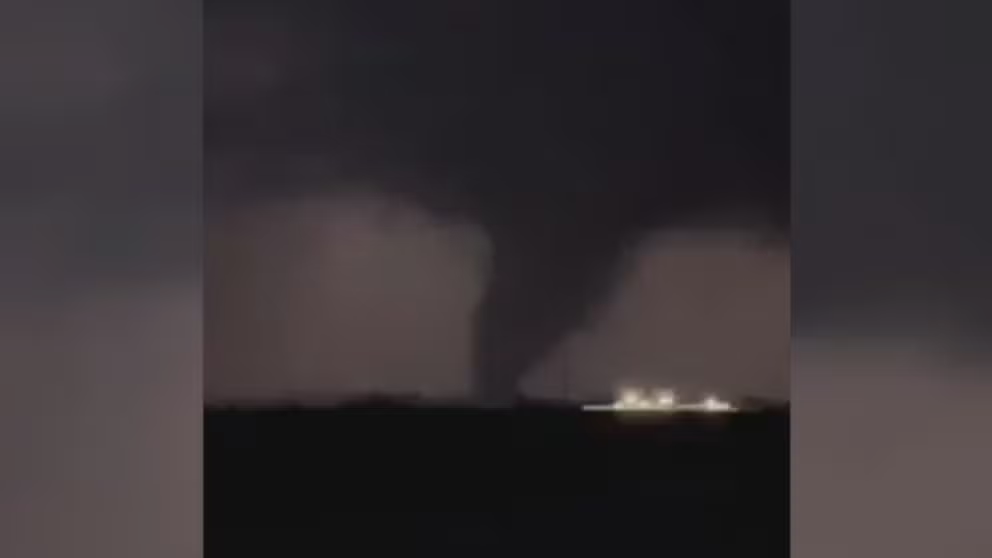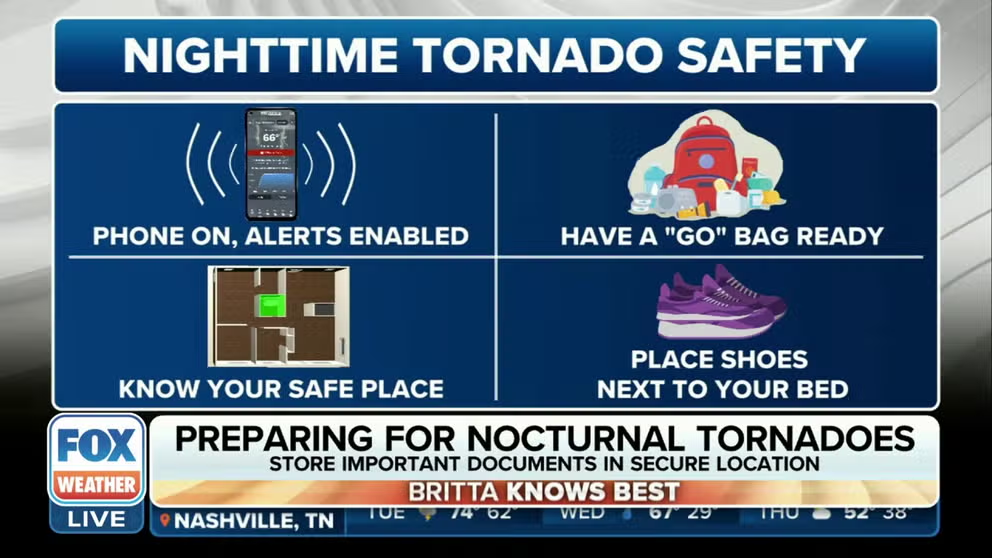Nighttime tornadoes far more likely to turn deadly than daytime ones
The highest percentage of nighttime tornadoes in the U.S. is found in the lower Arkansas, the lower and mid-Mississippi and the Tennessee River valleys, according to a study.
Why are nighttime tornadoes far more likely to turn deadly?
Tornadoes at any time of day can cause mass amounts of destruction, but tornadoes in the dark are far more likely to turn deadly.
Tornadoes at any time of day can cause mass amounts of destruction and potentially kill those caught unprepared, but tornadoes in the dark are far more likely to turn deadly.
According to a study, tornadoes that occur at night – when many people are asleep – are more than twice as likely to result in deaths than those that happen during the day.
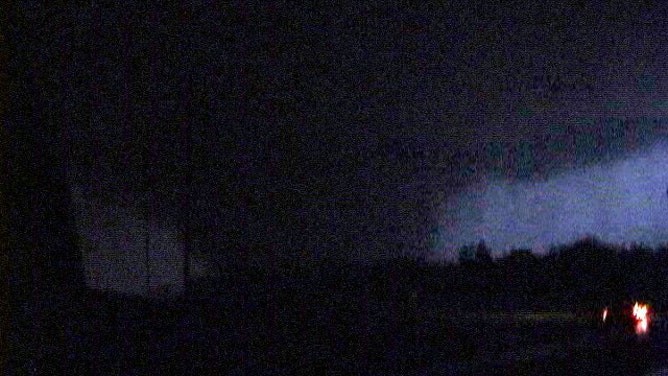
A nighttime tornado is photographed near Interstate 35 and Britton Road in the northern Oklahoma City, Oklahoma, metro area at about 10:45 p.m. CDT on May 9, 2003.
(Tim Marshall via the National Weather Service office in Norman, Oklahoma)
The study, led by Walker Ashley of Northern Illinois University and published in October 2008, examined data from the 48,165 tornadoes that were documented in the U.S. between 1950 and 2005.
Researchers found that only 27.3% of the twisters took place at night between sunset and sunrise. However, that 27.3% of nighttime tornadoes was responsible for 39.3% of tornado deaths and 42.1% of all killer tornadoes during the 55-year period of study.
Additionally, about one in every 20 nighttime tornadoes turned deadly, while only about one in every 50 daytime tornadoes were killers, according to the study.
TORNADOES HIT LARGE CITIES: THIS IS WHY
Britta Knows Best: Staying safe when tornadoes strike at night
Severe weather is possible in parts of the Midwest on Tuesday, and the threat will continue into the overnight hours. This includes a threat of nocturnal tornadoes. FOX Weather Meteorologist Britta Merwin provides some safety tips to help keep you safe and prepared.
One reason for this is that tornadoes are typically unable to be seen in the dark unless the sky is lit up by frequent lightning. There are also fewer storm spotters willing to chase storms at night because of this reason, which makes it even more difficult for meteorologists at the National Weather Service to confirm tornadoes are on the ground in the dark. That might mean reduced lead time when issuing Tornado Warnings.
In addition, tornadoes that occur overnight can catch many people off-guard because they may be sleeping and unaware a dangerous twister is headed in their direction.
Where do most nighttime tornadoes happen?
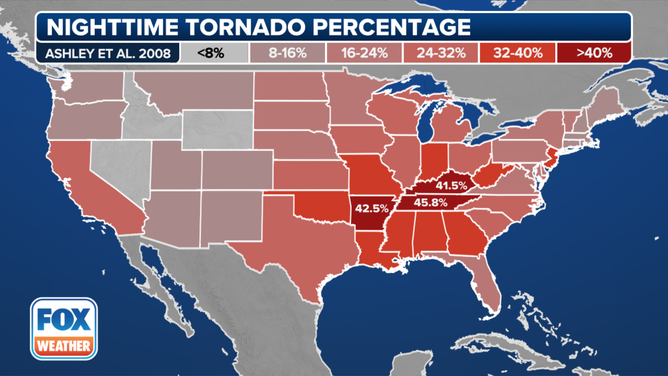
Percent of nighttime tornadoes by state between 1950-2005.
(Data: Ashley et al., 2008 / FOX Weather)
The highest percentage of nighttime tornadoes in the U.S. is found in the lower Arkansas, the lower and mid-Mississippi and the Tennessee River valleys, according to Ashley's study.
Tennessee leads the way, with 45.8% of its tornadoes happening in the dark. Arkansas sees 42.5% of its tornadoes between sunset and sunrise, while Kentucky has 41.5% of its twisters occurring at night.
WHERE ARE TORNADOES MOST COMMON?
Adding insult to injury, parts of the South can be at risk for tornadoes at any time of the year. Given the earlier sunsets in the fall and winter, any tornadoes during the colder months are more likely to occur at night since there's more darkness than daylight.
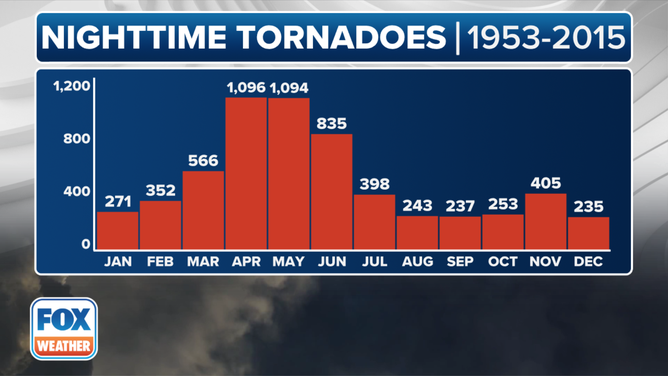
The average number of nighttime tornadoes (defined as between 9 p.m. and 6 a.m. Central time) of F/EF-1 or higher intensity occurring in each month, based on data from 1953-2015.
(Data: NOAA/SPC via the National Weather Association / FOX Weather)
In fact, October, November and December are considered the second severe weather season for portions of the South. There's a notable peak in nighttime tornadoes in November, with the month averaging more than 400 twisters in the dark, according to data from NOAA's Storm Prediction Center.
FALL IS THE SECOND SEVERE WEATHER SEASON
Preparing for a twister ahead of time can help you stay safe in the event one sweeps through your area, whether it be night or day.
FOX Weather has compiled a list of steps you can take now to prepare for a future tornado.
